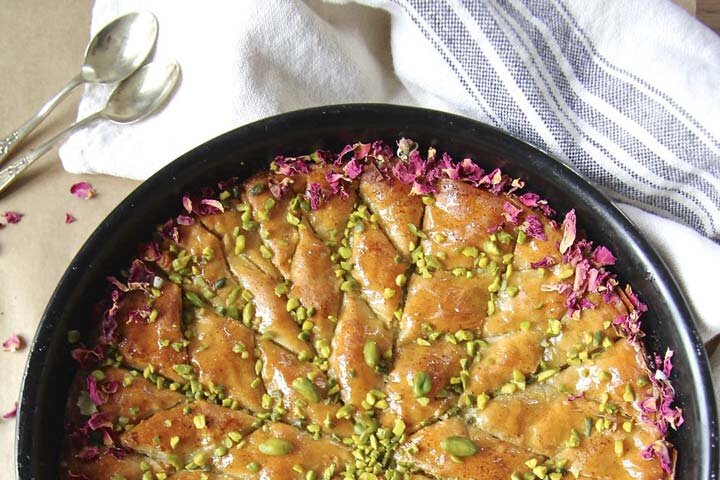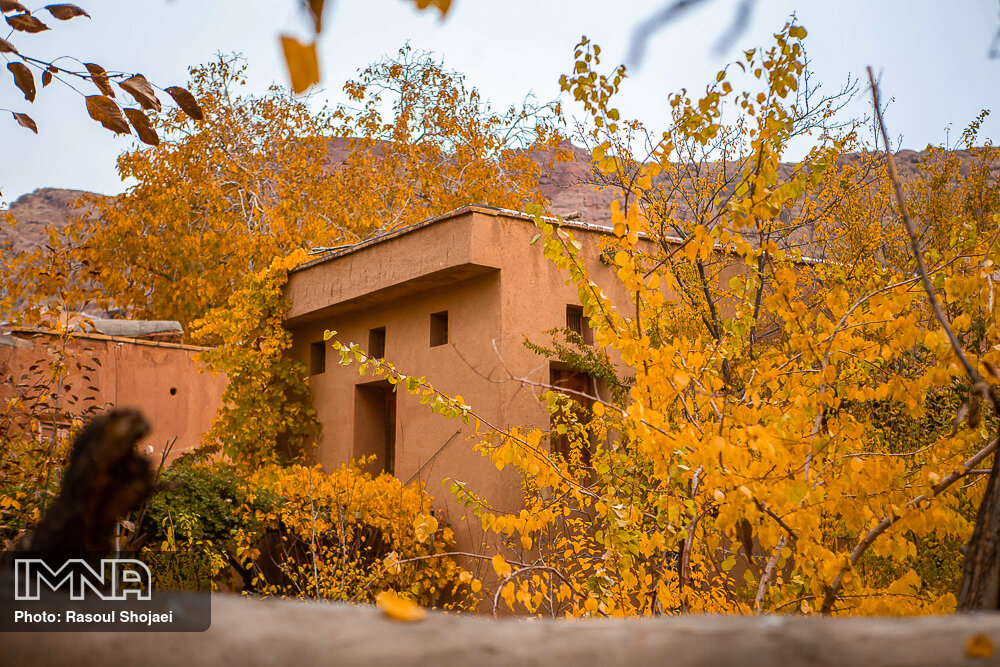Iran (IMNA) - Practiced in Azaran village, the local customs, named “Adaab-va-Rasum-e Esfandi” deals with Persian New Year, Kashan's tourism chief Ahmad Danaeinia said on Thursday.
It annually commences a month before Nowruz and includes cooking special dishes on the night of Esfand, offering gifts to the newlyweds, reading poems, and offering snacks to people, the official explained.
He said one of the newly registered sweet skills accounts for Kashan’s Baklava, a layered pastry dessert made of filo pastry, which is filled with chopped nuts and sweetened with syrup or honey.
The other is about the skill of making Sohan-e Mirzahosseini, which is a traditional Persian saffron brittle toffee made in a Kashan village, Danaeinia noted.

Kashan’s tourism office plans to develop local leisure activities to buttress eco-tourism in a selection of its rural villages. According to Danaeinia, rural tourism development has somehow been neglected in Kashan and its surroundings.
Kashan villages have a lot of potential for tourism development, he said. “Some of those villages have a unique historical context that may be registered on the national cultural heritage list.”
Kashan is situated on a route that connects Tehran to the giant destinations of Isfahan, Shiraz, and Yazd. Moreover, the ancient town is a gateway to many sights, stories, and surrounding attractive villages to discover.
Apart from centuries-old mansions, domed bazaars, and impressive mosques, Kashan embraces some archaeological gems. Most importantly, the Tepe Sialk has yielded interesting pottery pieces, metal tools, and domestic implements made from stone, clay, and bone that date from as early as the 4th millennium BC.
Having numerous pristine rural landscapes, picturesque villages, and natural gifts, Iran has many to offer to nature lovers. In addition, rural tourism development has the potential to support local communities and economies and create new opportunities for employment and income generation.

Despite the enormous potential for rural tourism in Iran, significant challenges need to be addressed to fully exploit this potential. One of the biggest challenges is infrastructure - many rural areas lack the basic amenities and facilities that tourists expect, such as adequate transport, accommodation, and tourism facilities. This can make it difficult for visitors to access and explore Iran's rural areas and limit the potential impact of tourism on these communities.
To realize the full potential of rural tourism in Iran, it is necessary to address the challenges and seize the opportunities. This requires investment in infrastructure, promotional and marketing initiatives, and the development of partnerships and collaborations among local communities, tour operators, and government agencies. With the right support and investment, rural tourism in Iran has the potential to be a major engine of economic, social, and cultural development while providing unforgettable experiences for visitors from around the world.
Tehran times


Your Comment